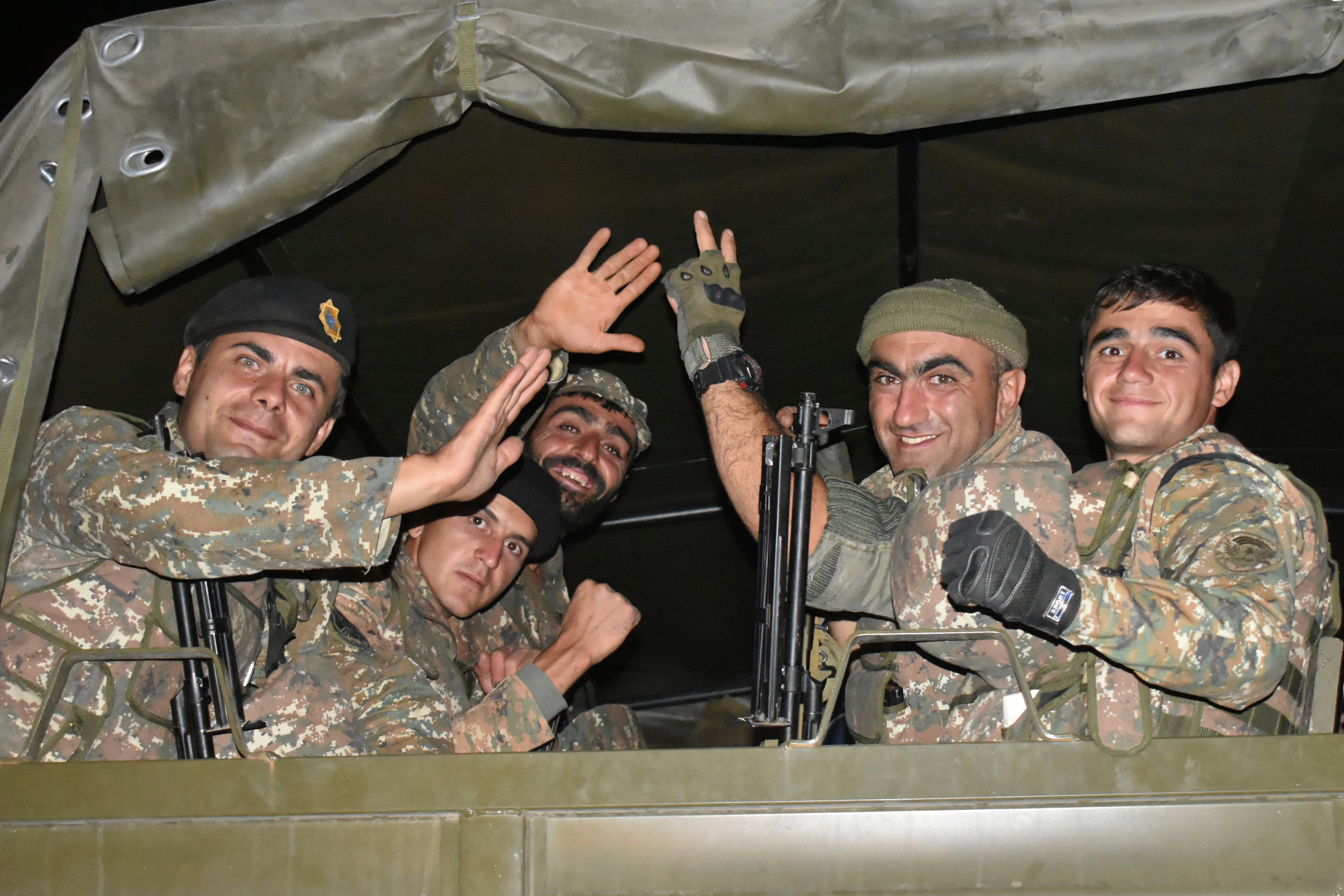Armenia and Azerbaijan conflict: What’s behind new fighting over Nagorno-Karabakh region?
The deadly fighting between Armenia and Azerbaijan over the disputed Caucasus Mountains territory of Nagorno-Karabakh has deep roots and could cause fallout beyond the region

Your support helps us to tell the story
From reproductive rights to climate change to Big Tech, The Independent is on the ground when the story is developing. Whether it's investigating the financials of Elon Musk's pro-Trump PAC or producing our latest documentary, 'The A Word', which shines a light on the American women fighting for reproductive rights, we know how important it is to parse out the facts from the messaging.
At such a critical moment in US history, we need reporters on the ground. Your donation allows us to keep sending journalists to speak to both sides of the story.
The Independent is trusted by Americans across the entire political spectrum. And unlike many other quality news outlets, we choose not to lock Americans out of our reporting and analysis with paywalls. We believe quality journalism should be available to everyone, paid for by those who can afford it.
Your support makes all the difference.The mountainous region of Nagorno-Karabakh where deadly new fighting erupted last week between Armenian and Azerbaijani forces, has been in a tense limbo since a 1994 truce. The Associated Press explains what’s behind the long-unresolved conflict and its most recent flare-up:
Where is Nagorno-Karabakh?
Nagorno-Karabakh is a region within Azerbaijan that has been under the control of ethnic Armenian forces backed by the Armenian government for more than a quarter-century.
The territory in the southern Caucasus Mountains covers an area of about 4,400 square kilometers (1,700 square miles) about the size of the U.S. state of Delaware.
How did the conflict start?
During the Soviet era, the mostly Armenian-populated region had an autonomous status within Azerbaijan. Long-simmering tensions between Christian Armenians and mostly Muslim Azeris began boiling over as the Soviet Union frayed in its final years
The open conflict broke out in 1988 when the region made a bid to join Armenia, triggering hostilities. They escalated into a full-blown war after the USSR collapsed in 1991, which killed an estimated 30,000 people. and displaced about 1 million.
By the time the war ended with a cease-fire in 1994, Armenian forces not only held Nagorno-Karabakh itself but also seized substantial areas outside the territory's borders.
What’s happened since?
International mediation efforts to determine the region’s final status have brought little visible progress.
Landlocked Armenia has suffered badly from an economic blockade imposed by Azerbaijan and its ally, Turkey
The region has remained tense and fighting periodically broke out. Scores were killed in an outbreak of hostilities in 2016, and then again this July when Azerbaijan and Armenia exchanged fire across their border.
Since new fighting started on Sept. 27, the warring sides reported hundreds of deaths, making it the biggest escalation in the conflict since 1994.
Nagorno-Karabakh officials said about 220 soldiers and at least 21 civilians have died in the fighting. Azerbaijani authorities haven't reported military casualties but said 27 civilians have been killed.
Both sides have accused each other of expanding the hostilities onto their territory beyond Nagorno-Karabakh.
The fighting involving heavy artillery, drones and warplanes has continued despite calls for a cease-fire from the West and Russia.
What’s the broader impact?
In addition to causing casualties and damage, the conflict in the small, hard-to-reach region is also of concern to major regional players.
Orthodox Christian Russia is Armenia’s main ally and sponsor and has a military base there.
NATO-member Turkey, which has close ethnic, cultural and historic bonds with Azerbaijan, has vowed its full backing to Baku in the conflict and has declared its readiness to support it militarily, if necessary. Turkey has backed Azerbaijan’s demand for Armenia’s withdrawal from Nagorno-Karabakh as a precondition for any ceasefire.
Turkey has trained Azerbaijani officers for decades and the two countries, which often refer to their special relationship as one of “two states, one nation,” recently conducted military exercises in Azerbaijan. Ankara is known to have sold drones and other weapons to Azerbaijan.
Iran neighbors both Armenia and Azerbaijan and is calling for calm.
The United States, France and Russia are the official sponsors of the long-stalled peace process under the auspices of the Vienna-based Organization for Security and Cooperation in Europe. The three countries have repeatedly called for cessation of hostilities and peace talks.

